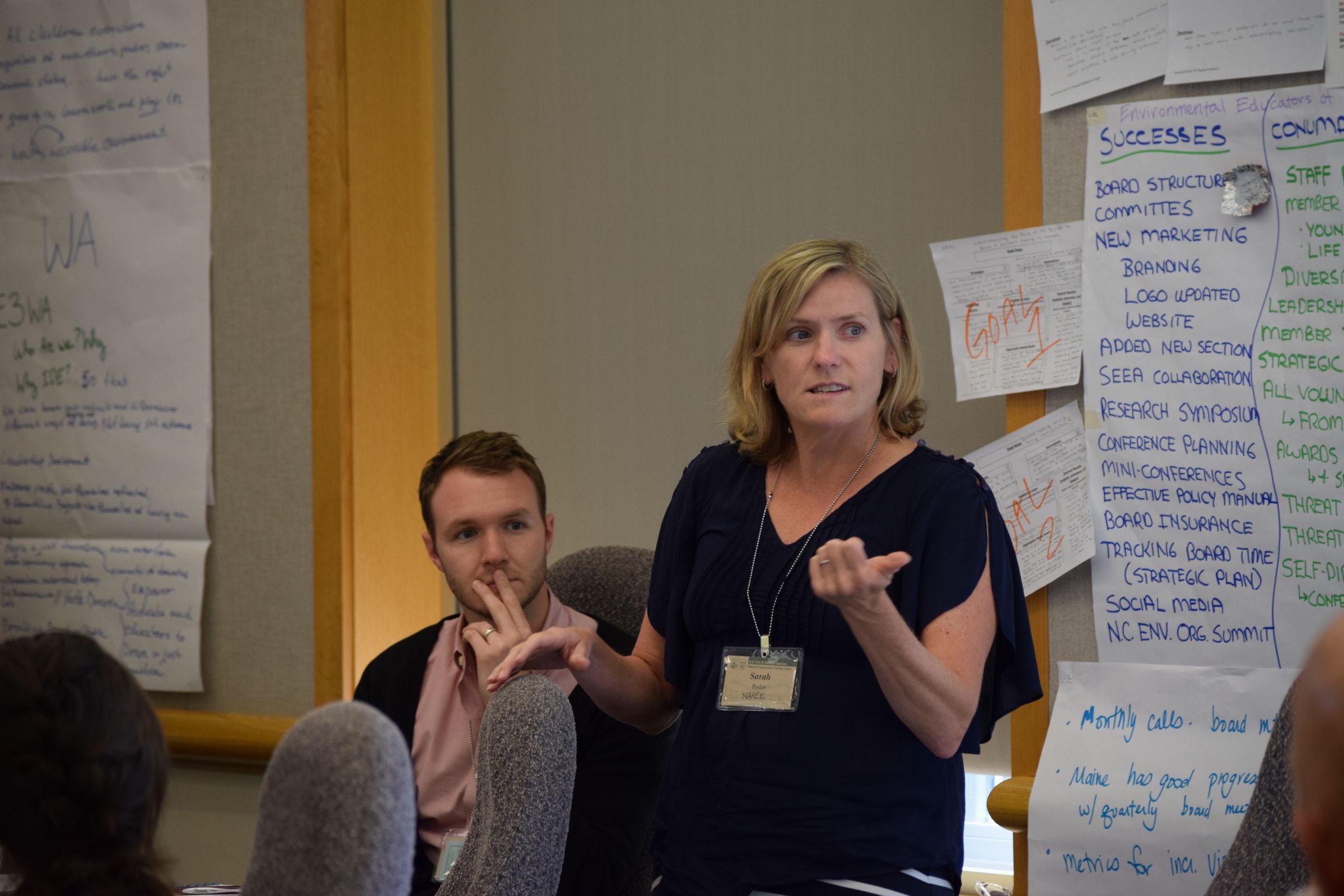Stanford University Review of 56 Studies Reveals That Environmental Education Programs Achieve Substantial Civic Engagement-Related Outcomes at the Individual and Community Levels
A research team from Stanford University conducted a systematic mixed-studies review to identify environmental education (EE) program outcomes related to civic engagement. After following the conventional steps of a systematic review to search for, identify, and synthesize relevant research, the team selected 56 peer-reviewed studies for the final sample.
The EE programs reported in these papers occurred in a range of settings, involved diverse audiences, and were generally longer than a month in duration. All 56 studies reported some level of positive findings, with 17 reporting civic engagement-related outcomes at the community level, such as community learning, community resilience, partnership building, and increased social capital. Fifty studies reported civic engagement-related outcomes at the individual level, with civic attitudes being the most frequent. Increased civic skills and civic knowledge were also commonly reported.
Importantly, most programs involved substantial investments of time, with 24 taking place from a month to a year, and 26 for more than one year. Refer to the Executive Summary and Key Findings document for more information on the analysis.
Most of the programs in the reviewed studies involved educators working to connect program content and topics to the local community by teaching about the local environment and exploring local environmental issues. Some studies also made connections to regional and global communities, increasing the scale of relevance for participants.
- Place-based approaches enabled learners to explore the local environment and relevant issues.
- Many of the programs connected to the local community by developing or strengthening partnerships with local universities, colleges, and schools; local government agencies or local offices of state, regional, and federal government agencies; and local nonprofits and citizen groups, among others.
- In cases where partnerships were not possible, community connections were made by working directly with local decision makers, environmental professionals, community activists, and/or other community members and stakeholders.
“The use of real-world environmental problems within the local community, the school community, and the family gave students a context in which to immediately practice the course concepts.” David Ampuero, San Esteban City Department of Education, San Esteban, Chile, et al.
Conclusion
In recent years, researchers have used simple measures—such as voter turnout—to document the steady decline of civic engagement across the United States. This decline is unfortunate since the benefits of improved civic engagement are well known. This juxtaposition creates a highly compelling case for developing programs that enhance civic engagement. Concurrently, environmental education practitioners and researchers increasingly note the co-benefits and shared interests between environmental and civic education because both focus on positive avenues to addressing today’s sustainability challenges. Through the Stanford team’s systematic and thematic review of environmental education and civic engagement outcomes, our hope is that the five described themes will assist educators, policymakers, funders, and others in better designing and supporting new or improving existing programs to meet these dual goals. Purposefully addressing civic engagement can strengthen democracy, build social cohesion, and enhance equity and sustainability in our communities.
For additional guidance on environmental education program development and management, see the Guidelines for Excellence in Environmental Education. For more information about program evaluation, please visit NAAEE’s online database of evaluation strategies, the research and evaluation learning module in eeLEARN, and the environmental education workbook for practitioners.
Key Findings
Key Findings
1. All 56 (100%) studies in the review reported some level of positive civic engagement outcomes, either at the individual level or the community level or both.
2. Positive environmental and academic outcomes occur alongside civic engagement-related outcomes (34 of 56 studies).
3. Interest in the relationship between environmental education and civic engagement is increasing, and the selected studies used multiple research methods and program approaches.
4. Positive individual-level civic engagement outcomes were seen across age groups, across continents, and regardless of length of program. Older adults were underrepresented in the programs reviewed in this study and may provide an untapped resource for interested participants.
5. The thematic analysis revealed five environmental education practices that support the development of civic engagement among program participants. Those practices are
- focusing on the local community,
- engaging learners in participatory and experiential approaches,
- including action-taking as a key program component,
- developing lifelong cognitive skills, and
- providing opportunities for meaningful social interactions.
Bottom Line
With partisan politics dividing communities across the nation, it is increasingly important to restore faith in democratic principles and processes. Encouraging people to become more civically engaged and empowering them with the skills to do so effectively are important and achievable outcomes for EE programs that use the local community as a source of action projects. Young people aged 12 to 25 are likely to be aware of the need for change and anxious to make a difference, making them particularly receptive to this type of opportunity. Such EE programs can lay a foundation for civic skills that may contribute to a lifetime of increased civic engagement and stronger communities.
Process
Stanford University's Mixed-Studies Review Process
A research team from Stanford University conducted a systematic mixed-studies review to identify environmental education (EE) program outcomes related to civic engagement.1 After following the conventional steps of a systematic review to search for, identify, and synthesize relevant research, the team selected 56 peer-reviewed studies for the final sample.2 The EE programs reported in these papers occurred in a range of settings, involved diverse audiences, and were generally longer than a month in duration. All 56 studies reported some level of positive findings, with 17 reporting civic engagement-related outcomes at the community level, such as community learning, community resilience, partnership building, and increased social capital. Fifty studies reported civic engagement-related outcomes at the individual level, with civic attitudes being the most frequent. Increased civic skills and civic knowledge were also commonly reported.
The team conducted a thematic analysis, which revealed five practices EE practitioners should consider when designing or adapting their programs to better support civic engagement outcomes. Those practices include (1) focusing on the local community; (2) actively engaging learners through participatory and experiential education; (3) building in action-taking as an integral part of the program; (4) emphasizing development of lifelong cognitive skills; and (5) providing ongoing opportunities for participants to engage in meaningful social interaction.
Research
Research Articles and References
References
1 Ardoin, N. M., A. W. Bowers, and E. Gaillard. 2023. “A systematic mixed studies review of civic engagement outcomes in environmental education.” Environmental Education Research, 29(1), 1-26. DOI: 10.1080/13504622.2022.2135688
2 For more information on the research review process used in this study and how the study relates to the reviews completed for other outcome areas in the eeWORKS project, please see the methods section of Ardoin, Bowers, and Gaillard (2023) in note 1 and From Anecdotes to Evidence: Diving into the Research Review Process. https://naaee.org/sites/default/ f iles/inline-files/ee_works_review_process.4.26.21.pdf




